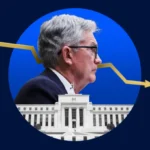Bitcoin Under Pressure Amid Rising Economic Uncertainty
The U.S. President is set to introduce a new wave of tariffs, a move that could ripple across global markets—including the cryptocurrency sector. U.S. Treasury Secretary Scott Bessent confirmed that the announcement will be made on Liberation Day, April 2, at 4 p.m. Washington time. Early reports suggest that the Trump administration is considering a 20% tax on imported goods, a centerpiece of the broader Trump Tariff Plan.
With inflation concerns and interest rate shifts on the horizon, Bitcoin and other digital assets are poised to feel the impact of these significant economic changes.
The Trump Tariff Plan: A Potential Catalyst for Crypto Volatility
Bitcoin traders and investors are watching developments closely as the new tariff announcement looms. While some experts believe that trade tensions have already weighed on Bitcoin’s price, others argue that the cryptocurrency’s struggles began well before the tariff news surfaced.
Regardless, the prospect of new tariffs injects an additional layer of uncertainty into an already fragile market.
Bitcoin’s Struggles Predate the Tariff Threat
Bitcoin has been grappling with stagnation for several months. Since early March, the cryptocurrency has hovered around $89,000, showing little momentum. On April 2, Bitcoin posted a modest 1.65% gain, trading at $84,513.34.
Although some blame trade tensions for Bitcoin’s sluggish performance, a deeper analysis points to broader factors at play—ranging from wavering investor confidence to macroeconomic challenges that predate the Trump tariff announcement.
The Disappointment Over the U.S. Bitcoin Reserve Proposal
Hopes were high earlier this year when President Trump proposed establishing a strategic national Bitcoin reserve, a move that many thought would signal strong government support for Bitcoin.
However, the executive order Trump signed in March notably omitted any mention of the Bitcoin reserve initiative, deflating investor optimism. The absence of a national Bitcoin stockpile has likely contributed to the cryptocurrency’s continued weakness, as expectations of a major institutional boost were dashed.
Inflation Trends: A Mixed Bag for Bitcoin
Inflation remains a critical force shaping Bitcoin’s prospects. Traditionally viewed as a hedge against inflation, Bitcoin often gains appeal when the value of fiat currencies erodes.
However, inflation has been cooling:
- U.S. inflation stands at 2.5%
- European inflation is slightly lower at 2.2%
While slowing inflation could lead the Federal Reserve to lower interest rates, this development may ironically reduce Bitcoin’s appeal. Lower interest rates could make traditional assets like stocks and bonds more attractive, pulling investment away from cryptocurrencies.
A Weakening Job Market Increases Caution
Compounding these concerns, the U.S. labor market shows signs of strain. Recent data from the U.S. Labor Department revealed that job openings are at their lowest level in nearly four years.
This deterioration raises investor caution, pushing many toward safer, lower-risk investments such as government bonds—at the expense of riskier assets like Bitcoin.
Tariff Tensions: More Headwinds for Crypto
Trump’s proposed 20% tariff on imported goods is expected to have broad economic consequences, including higher costs for U.S. companies and consumers. Should the economy slow further as a result, cautious sentiment could dominate, potentially triggering additional sell-offs in the crypto market.
Global economic slowdown fears—exacerbated by the tariff plan—could create headwinds not just for stocks and commodities, but for cryptocurrencies as well.
What Lies Ahead for Bitcoin and the Crypto Market?
Although the Trump Tariff Plan adds another layer of uncertainty, Bitcoin’s future hinges on a complex mix of factors:
- Trade policies and their impact on global growth
- Inflation trends and Federal Reserve actions
- Shifting investor sentiment toward riskier assets
If global uncertainty deepens, Bitcoin could regain its status as a safe-haven asset, attracting investors seeking protection from economic turmoil. Conversely, if interest rates fall and safer investments become more attractive, Bitcoin might continue to struggle.
The coming weeks will be pivotal. Crypto traders and investors will be watching closely as the interplay between tariffs, inflation, and market sentiment unfolds—determining the next major move for Bitcoin and the broader digital asset market.














